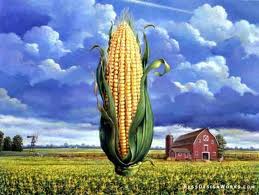Pet Foods Part 1 – Myth Busting!

Asking someone about their preferences in pet foods can be as polarizing as if you asked about their political affiliation. Many pet owners have very strong opinions and beliefs when it comes to the type of food they choose for their four-legged companions and that is certainly their right. However, there are a few myths about pet foods or pet food ingredients that need some clarification.
First, a very common assertion in online discussions, and even in veterinary waiting rooms, is that corn is a bad ingredient and our pets cannot digest it. In fact, some people will outright refuse any pet food that contains any corn in the formulation. This myth comes about because of the human preference for eating whole kernel corn.
But, looking more closely at ingredient labels, pet owners will see that the “corn” present in many pet foods is actually corn meal or even corn gluten meal. These processed ingredients provide a very high quality carbohydrate source and, in the case of corn gluten meal, a very digestible and good source of amino acids. The amino acids found in corn protein complement many of the amino acids found in meat, thereby creating a food with all the essential amino acids a pet needs. An important fact to remember is that nutrients are the most important part of a pet’s diet, not the specific ingredients!
Despite the numerous myths circulating, corn is no more allergenic that any other protein source and actually has been shown to be less allergenic than beef, soy, wheat and dairy proteins.
The next myth has to do with an unfortunate naming convention. Almost everyone has seen pet food commercials showing paid actors pretending to be disgusted by the pet food ingredient called “meat by products”. Again, the confusion and misunderstandings happen because of what humans have decided to name particular parts of the meat producing animals. Skeletal muscle is the most common meat that ends up in our grocery stores and on our dinner plates. But, there is a lot of muscle and other protein rich organs that are not consumed by people. Since we don’t use these leftovers for human food, they are termed “by-products”.
In reality, by-products include highly digestible and nutritious organs, such as the liver and lungs and do NOT include things like hair, horns or hooves, as advertising gimmicks would have you believe. More to the point, if pet food companies did NOT use these organs and other parts, a large portion of the animals we raise for food would go to waste, resulting in the need to raise MORE animals to feed our pets. As the American Animal Hospital Association has said, “Feeding by-products = green living”.
Finally, many people believe that veterinarians are not instructed in any sort of nutrition basics during their intense schooling. This is actually a big fallacy as almost all veterinarians will have at least a semester devoted to nutrition and many may have completed undergraduate nutrition courses before applying to veterinary school. Continuing education opportunities that discuss nutrition are also popular lectures for veterinarians and veterinary technicians.
What you feed your pet will be a decision you make based on a variety of factors. But, don’t fall victim to Internet fads promoted by individuals without scientific training or who will profit when you purchase their brand of food. It’s also important to review a variety of information sources before you reach any conclusion about how good, or bad, a particular ingredient might be.
Whether you choose to use a “grain-free” diet, an “organic” pet food or the cheapest food you can find, it’s important to discuss your pet’s nutrition with your veterinarian. He or she can help you understand what the pet food labels really mean and help you make a sound decision based on the needs of your pet.


